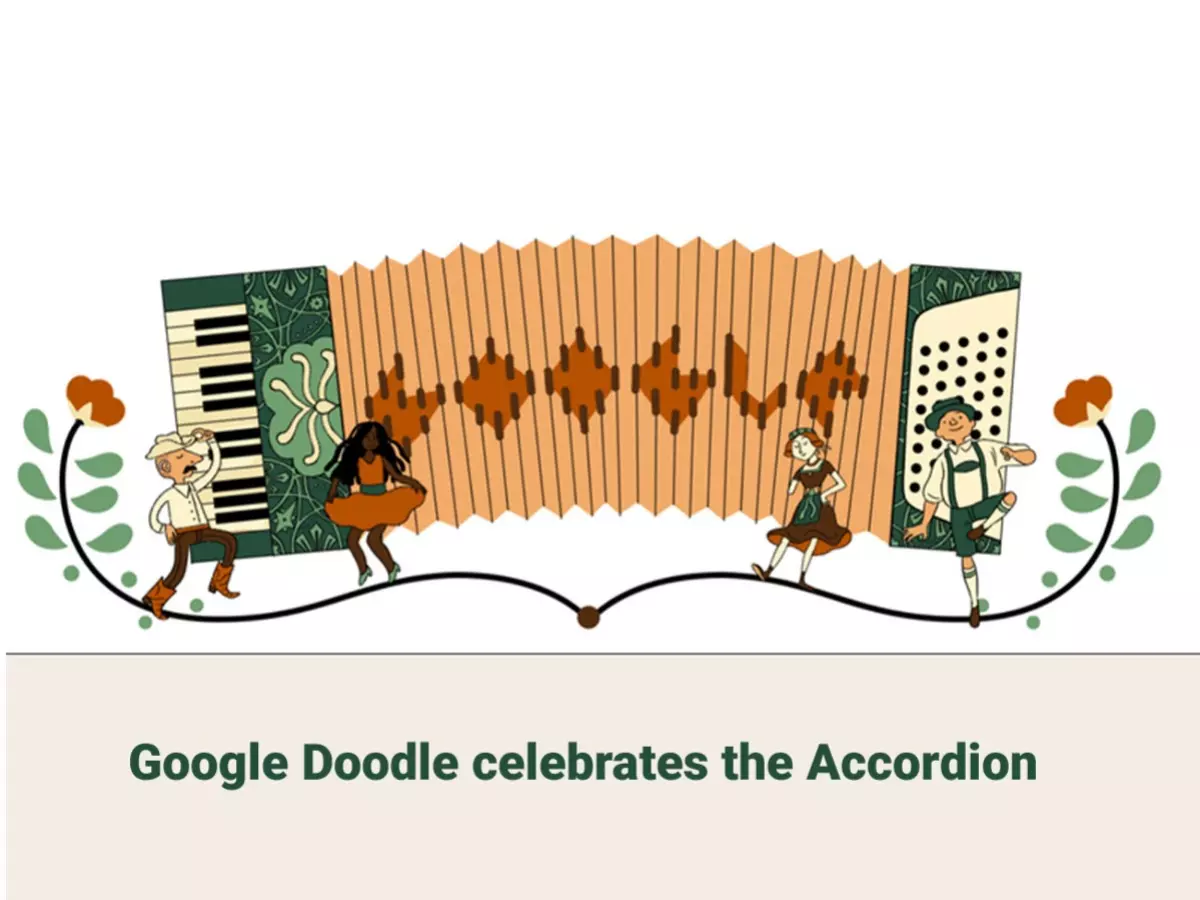Google Doodle Celebrates: Today’s Google Doodle celebrates a significant milestone in musical history—the anniversary of the accordion’s patent, which was granted on this day in 1829. This beloved instrument, known for its distinctive bellows and rich sound, has made a profound impact on various music genres around the world. From folk and classical melodies to the lively beats of jazz and pop, the accordion’s versatility and charm continue to resonate with musicians and audiences alike.
The Invention of the Accordion
Origins and Patent
The accordion was patented in 1829 by Cyrill Demian, an Armenian inventor living in Vienna. The instrument’s name is derived from the German word “akkord,” meaning chord, reflecting its ability to produce multiple notes simultaneously.
Early Features
Early versions of the accordion featured buttons on one side, each producing the sound of an entire chord. An impressive aspect of these early models was that the same button could produce two different chords depending on whether the bellows were expanding or contracting.
Growth and Popularity in the 19th Century
Manufacturing in Germany
Throughout the late 1800s, manufacturers in Germany significantly increased accordion production due to its growing popularity among folk musicians across Europe. The instrument’s portability and rich sound made it a favorite for various musical styles.
Emigration and Global Spread
As Europeans emigrated to different parts of the world, they brought the accordion with them, helping to spread its use and influence. This global migration contributed to the accordion’s presence in diverse musical traditions.
The Accordion in Various Music Genres
Folk and Traditional Music
The accordion has been a staple in folk music across many cultures. Its ability to produce rich, harmonic sounds made it ideal for traditional melodies and dances.
Classical and Jazz
In classical music, the accordion has been used to add unique textures and tones. Jazz musicians have also embraced the instrument, incorporating its distinctive sound into various compositions.
Pop and Modern Music
The versatility of the accordion has allowed it to be featured in modern pop music, blending traditional sounds with contemporary styles. Musicians continue to explore its potential in new and innovative ways.
The Accordion in Cultural Celebrations
Oktoberfest
One event where the accordion is always present is Oktoberfest, the famous German festival known for its lively music, carnival atmosphere, and traditional clothing like Dirndl dresses and lederhosen. The accordion’s traditional sound plays a central role in the festival’s musical entertainment.
Latino Polka and Tango
The accordion has also found a significant place in Latino music, particularly in the polka and tango genres. Its ability to convey both joyful and melancholic tones makes it perfect for these emotionally expressive styles.
Cajun and Other Regional Music
In the United States, the accordion is a key instrument in Cajun music, a genre that blends French, African, and American influences. Its use in regional music highlights its adaptability and enduring appeal.
Modern Developments and Innovations
Evolution of the Instrument
Modern accordions have evolved to include both button and piano-style keyboards. Some versions even incorporate electronic elements, allowing them to be plugged into amplifiers or create synthesized sounds.
Continued Influence
Today, the accordion continues to influence music globally. Its traditional sound remains popular in cultural celebrations and musical compositions, proving that this 200-year-old instrument still holds a significant place in the world of music.
FAQs:-
What is the origin of the accordion?
The accordion was patented in 1829 by Cyrill Demian, an Armenian inventor in Vienna. The name comes from the German word “akkord,” meaning chord.
How did the accordion become popular globally?
The accordion became popular globally as Europeans emigrated and took the instrument with them, integrating it into various musical traditions worldwide.
In which music genres is the accordion commonly used?
The accordion is used in folk, classical, jazz, pop, Latino polka, tango, Cajun, and other regional music genres.
What are some modern developments in accordion design?
Modern accordions can have button or piano-style keyboards, and some incorporate electronic elements for amplification or synthesized sounds.
What is a significant cultural event where the accordion is prominently featured?
The accordion is prominently featured in Oktoberfest, the famous German festival known for its lively music and traditional celebrations.
How has the accordion influenced modern music?
The accordion continues to influence modern music by blending traditional sounds with contemporary styles, showcasing its versatility and enduring appeal.
Conclusion
The Google Doodle celebrating the accordion’s 1829 patent anniversary highlights the instrument’s remarkable journey and global impact. From its early days in Europe to its widespread adoption in various music genres, the accordion remains a beloved and versatile instrument. As we celebrate this milestone, we recognize the accordion’s enduring influence and the joy it continues to bring to musicians and audiences around the world.
